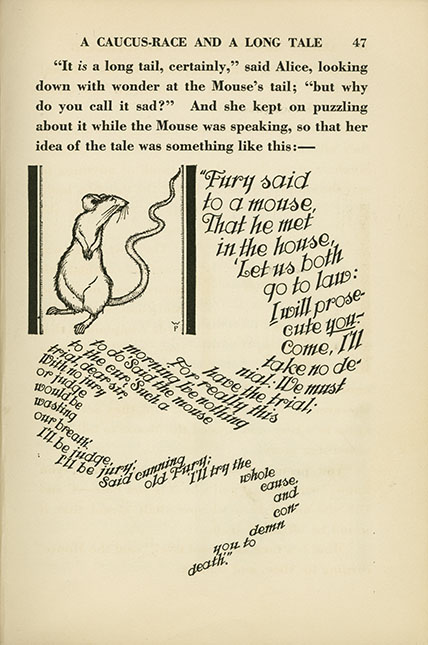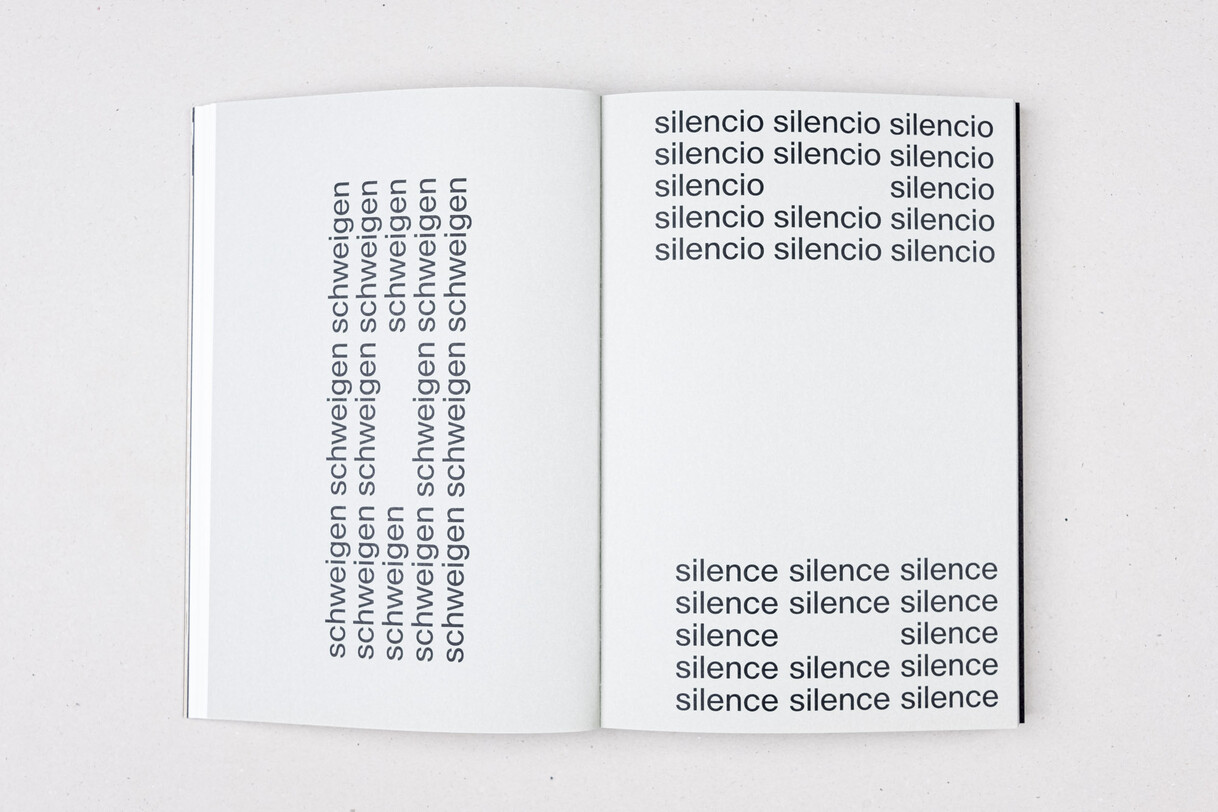created, $=dv.current().file.ctime & modified, =this.modified
tags: Poetry
rel: Absence of Clutter - Minimal Writing as Art and Literature
The visual element of their poetry the concrete poets’ poetry tended to be structural, a consequence of the poem, a “picture” of the lines of force of the work itself, and not merely textural. It was poetry beyond paraphrase … the word, not words, words, words or expressionistic squiggles …
rel:Effective Summarizationquote
Easter Wings by George Herbert (forms wings)

Lewis Carroll Mouse Tail (forms tail)

However brilliant these two writers were, in these cases they were using language to make pictures; the concrete poets, beginning with Gomringer, worked to create structures. Their poems are not just verse (lineated language), but made from lines of force. In many cases, as with the unnamed poem I must call “silencio,” an entire concrete poem can be understood to cohere as a word.
an entire concrete poem can be understood to cohere as a word.
Fascinating, isn’t it, that John Cage’s 4’33” was composed and presented in 1952, preceding this poem? This poem, too, seems to structurally show, through its lines of force, that silence can take center stage.
Sonnets can be about anything, although the form does have a heritage. Reading the poem as a sonnet allows us to make a connection to the sonnet tradition if we wish. We can, for instance, ask whether this sonnet has anything to do with love, whether in the most traditional sense of love for a woman or, in John Donne and Herbert’s senses, religious love. Could the silence of this sonnet be that of being understood, and of not needing to say anything aloud?

Terrance Hayes - 2002 Sonnet
We sliced the watermelon into smiles.
We sliced the watermelon into smiles.
We sliced the watermelon into smiles.
We sliced the watermelon into smiles.We sliced the watermelon into smiles.
We sliced the watermelon into smiles.
We sliced the watermelon into smiles.
We sliced the watermelon into smiles.We sliced the watermelon into smiles.
We sliced the watermelon into smiles.
We sliced the watermelon into smiles.
We sliced the watermelon into smiles.We sliced the watermelon into smiles.
We sliced the watermelon into smiles.
Paul Laurence Dunbar - We Wear the Mask
We wear the mask that grins and lies, It hides our cheeks and shades our eyes,— This debt we pay to human guile; With torn and bleeding hearts we smile, And mouth with myriad subtleties.
Why should the world be over-wise, In counting all our tears and sighs? Nay, let them only see us, while We wear the mask.
We smile, but, O great Christ, our cries To thee from tortured souls arise. We sing, but oh the clay is vile Beneath our feet, and long the mile; But let the world dream otherwise, We wear the mask!
With the discovery of poetic space – the white surface – automatically comes an awareness of blackness, the positive shapes that form and structure the surface and create its rhythm. At a macro level, what is important is the placement of the text, the words, leading, tracking and spacing, contrast, and hierarchy. At a micro level, the choice of basic material creates the word object itself: the typeface and the letter shape with its countless formal and historic variations. Serif and sans serif, script and handwriting, typewriter (monospaced) uppercase or lowercase, and so forth. link
The concrete poets simply surfaced this buried layer of meaning that is found in all written language: ‘when the word became an image, the letterform became the fundamental drawing tool and the brush in the hands of the concrete poet. The form, weight, and scale of each letter could, at best, become part of what was intended to be said’
Gomringer: “I felt at that time that it was a beginning. Silence is the beginning: the beginning of meditation and so on. And you always have to come back to silence”quote